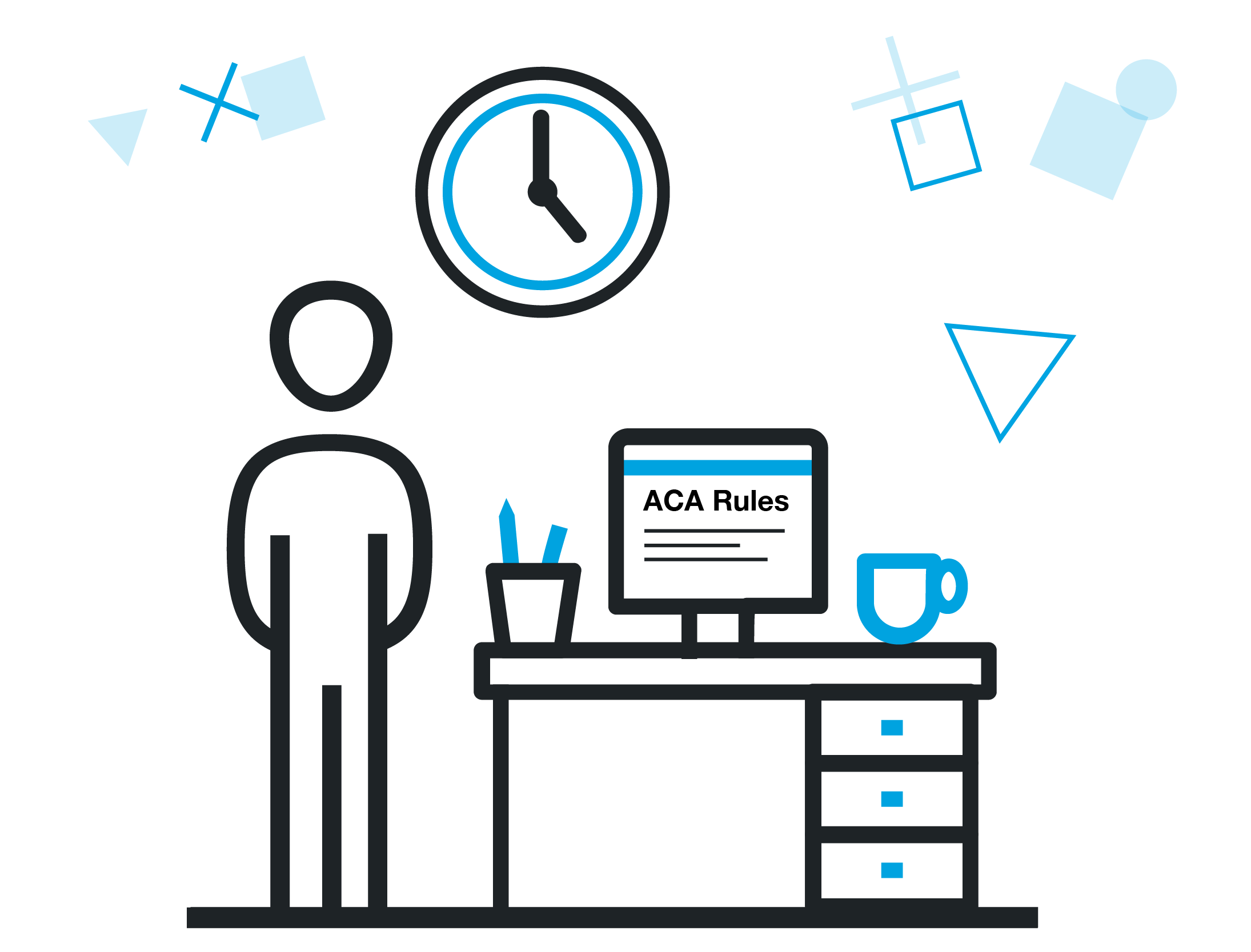The Affordable Care Act imposes various obligations on Applicable Large Employers (ALEs).
For example, one requirement — the ACA full-time employee rules — requires that ALEs offer affordable Minimum Essential Coverage (MEC) to at least 95% of their full-time employees, and their dependents. The coverage must meet Minimum Value (MV) and be affordable to employees.
That may sound easy enough—after all you know who your full-time employees are. Unfortunately, while it sounds easy, it’s not. In fact, it can be quite confusing. But it’s important that employers get it right.
Some Definitions
First, it’s important to understand some key terms related to the ACA’s full-time employee rules.
- An Applicable Large Employer (ALE) is an employer with at least 50 full-time employees, including full-time equivalent employees for more than 120 days during the preceding calendar year.
- ACA full-time employees are those who work 30 hours a week or 130 hours a month. As you can see, this is not most employers’ general understanding of what a full-time employee is. But, it’s the IRS definition you need to abide by.
- The ACA Employer Mandate is a requirement that employers offer health insurance to their full-time employees, including full-time equivalent employees. If they don’t, it can result in a penalty letter— Letter 226J.
So, exactly what is it that makes this all so challenging?
The ACA Full-Time Employee Rules Challenge
Especially for companies that employ a large number of variable-hour employees—for instance, employees who work different shifts and hours on a regular basis—it can be challenging to identify those who work 30 hours a week or 130 hours a month. That requires the use of the Look-Back Measurement Method to calculate average hours worked over time.
Full-time equivalent (FTE) employees must also be considered. Here, we’re not talking about actual employees, but about a calculation of all non-full-time employees. Part-timers and seasonal workers’ hours must be added together monthly to achieve this calculation.
Here’s how to do this calculation: Take your total number of part-time and seasonal employees and total their hours of service for a specific month. Then divide that total by 120. This will be your FTE count for that month. Add to your full-time employee count to determine ALE status.
Keep in mind that you will need to do this calculation on a monthly basis and average it over the prior year to determine ALE status for the current year.
Precision matters.
There are some practical steps employers can take to ensure that they are accurately calculating full-time employee and full-time equivalent (FTE) employee hours to meet the ACA full-time employee benefit rules.
Practical Steps for Employers to Take
To ensure compliance, follow these important steps:
- Accurately track employee hours. This is a foundational “must do.” Be sure that you are tracking all hours worked by employees, including part-time and seasonal employees. When employee classifications are accurately logged in your payroll, HCM, and benefits platforms, this task will be much simplified.
- Review employee classifications regularly to ensure both accuracy and consistency.
- Offer affordable health insurance coverage to full-time employees and their dependents if you can be classified as an ALE.
- Stay up-to-date on changes to the ACA and its requirements.
Finally, consult with an ACA expert to ensure you’re in compliance to avoid penalties, which can be steep. Outsourcing your ACA compliance to a full-service solution provider, like Trusaic, can help.





